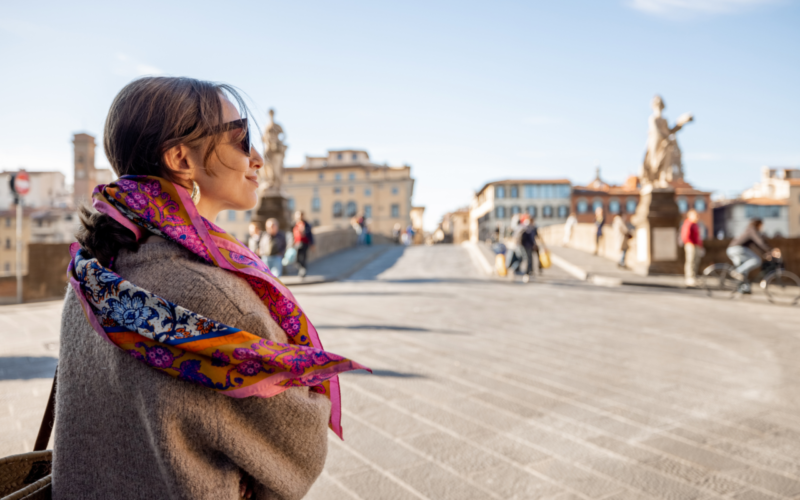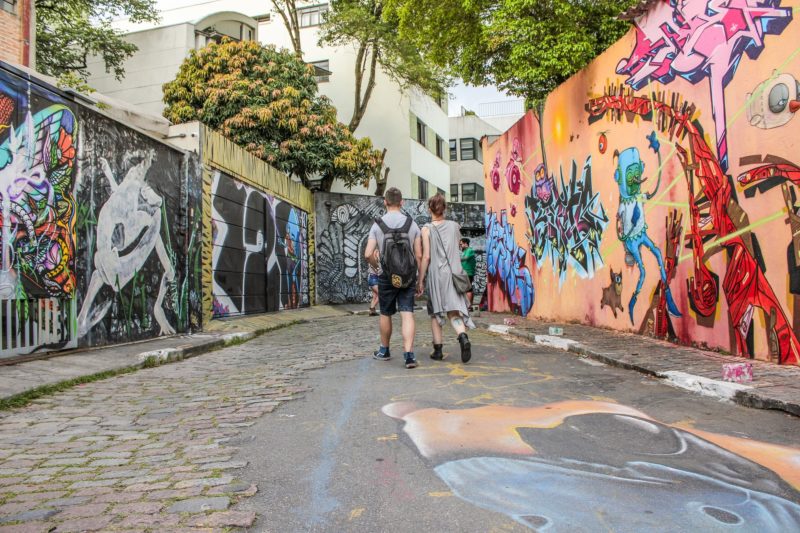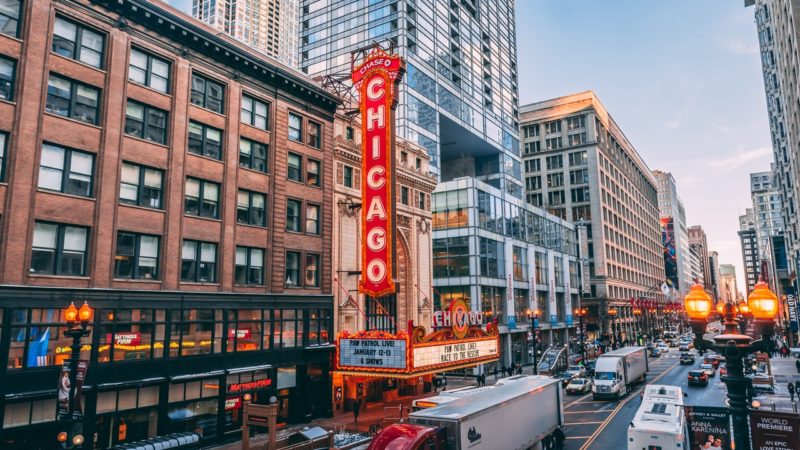Latin America is a region filled with diverse countries, stunning beauty, and vibrant culture. It’s also currently front and center in the women’s movement. Latin America made headlines throughout 2020 for it’s spike in femicides. Many countries also made headlines for their vibrant and historic protests in response, with a strong women’s movement erupting throughout the region.
When we speak about Latin America, you’ll often hear, “is it safe to travel to Latin America, especially as a woman?” While the recent increase in violence against women is alarming, thousands flock to Latin America every year, unharmed. As travelers, however, it’s important that we don’t simply ignore what’s happening in Latin America. Instead, we can use our privilege and our power to be an ally to the women’s movement.
Part of being a sustainable traveler means taking the time to understand the culture and politics of each place we visit, and then using that awareness to leave a positive impact. In this article we’ll cover what’s happening in Latin America right now as well as what you as a traveler can do to help.

What is Femicide?
Femicide is essentially gender based killing. Femicide is the killing of women because they are women. Femicides are primarily committed by men and often by someone the victim knows, like a partner or family member. These are not isolated crimes – they happen because of unequal power structure and ingrained societal belief.
Femicides are considered the most violent form of discrimination against women. Femicides often involve previous abuse, intimidation, or threats over a period of time before the actual murder occurs.
Femicide killings can be direct like intimate-partner violence, Indigenous identity killings, or killing women trying to flee. They can also be indirect, such as deaths from poor treatment or starvation, deaths related to gang violence or trafficking or by negligent practices.
Femicide Rates by Country in Latin America
Femicides are a global issue, with 87,000 recorded femicides in 2017. Latin America is home to the majority of the top 25 countries in the world for femicide, with Honduras known as the murder capital and Brazil often reporting the highest instances of gender-based violence.
When looking at femicide rates, it’s important to understand that the data does not reflect the scope of the problem. The numbers we have are only of murders that are legally deemed a femicide. Many countries don’t recognize femicide as its own crime. For the countries that do, they have differing criteria for femicide, and many are hesitant to label homicides as femicides.
The data doesn’t account for the thousands of women that go missing every year either. We also need to include population size when determining which countries are the most dangerous for women.
The most recent data we have for femicide rates by country was taken in 2019, so this doesn’t take into account the pandemic increases. The 2019 statistics for femicide in Latin America show the top five countries as Brazil(1,326), Mexico(943), Colombia(571), Argentina(327) and Honduras(299).

Understanding the Women’s Movement in Latin America
Despite the pandemic, historic protests and movements have erupted throughout Latin America. While many countries are in the midst of political conflict, some countries are beginning to move in a positive direction. The Latina feminists are to thank for that.
What women are primarily fighting against are conservative and sexist beliefs, as well as corrupt governments. The two immediate issues that stand in the way of women’s progress are abortion rights and femicide.
Femicide has doubled throughout Latin America in the last five years. At the same time, a huge movement for abortion rights has erupted as activists understand that the two are connected. As long as women don’t have autonomy over their own bodies, the likelihood of those bodies being violated increases.
Most Latin American countries are Catholic and/or hold conservative, traditional values and laws. All Latin American governments are male dominated. That, paired with a deeply patriarchal society, makes it difficult for women to achieve equality.
Abortion is illegal in numerous Latin Amerian countries, with El Salvador sentencing women to 40 years in prison for having one. If abortion is legal, it’s often only allowed in circumstances such as rape. While various efforts to pass laws to legalize abortion throughout Latin America have been proposed in the last few years, they have yet to succeed. Chile, Argentina and now Mexico have been leading the way in abortion rights activism.
When it comes to femicide, it’s not a lack of legal recognition that stands in the way of justice. Most countries have laws that recognize femicide, but many of these laws make it difficult to convict perpetrators, they aren’t enforced or are never investigated. There have also been notable femicide cases where police or government involvement was suspected, especially when it comes to cartel/trafficking related disappearances and murders.
Today, women throughout Latin America understand the importance of making their voices heard and spreading awareness through social media and protests that their governments can’t ignore.

11 Ways to Support the Feminist Movement in Latin America While Traveling
1. Educate Yourself
When learning about any social issue, it’s important to pause before hitting share or send. We must first educate ourselves to understand the issue before we can help. Take the time to consult Google. The articles referenced throughout this piece are excellent places to start to learn about feminism in Latin America, Latina feminists and what and why women are protesting near you.
Educating yourself before traveling to Latin America is especially important- it should not be up to the women there to both educate you and fight against their own oppression.
Once you have an overall general understanding of the issue, take the time to learn more locally. Attend events, take tours, read the local news, speak to organizations, and ask your tour guides for their opinion. There’s no better way to understand an issue than by learning about the people, culture, and history surrounding you first.
2. Spread Awareness
The number one thing we can do as tourists, both safely and legally, is to raise awareness for these issues. So many people don’t even know what femicide is, let alone what’s happening in Latin America. Even less know about the women’s movement and the ongoing feminist protests throughout Latin America. As travelers, we are able to share what’s happening right in front of us.
International attention on these issues is one of the best ways to help create real, lasting change. Many women throughout Latin America risk their lives to raise awareness for these issues. All it takes is a simple click of the share button for us to help.
3. Take Feminist or Women-Led Tours

Some of the best tours I’ve taken were feminist tours. I took one in Santiago, Chile and in Buenos Aires, Argentina that were particularly memorable. Taking a feminist tour instead of a traditional tour helps you understand a city’s history through a unique lens. It’s also a great way to support Latin American feminism as your money is directly going to local feminists and activists.
Can’t find a designated feminist tour? No problem! The tourism industry is largely male dominated. Take a moment to think back on the tours and guides you’ve had on your travels- were most of them men? Any time you choose a women-led tour or tour company, you’re advocating for change and supporting women. Be intentional about booking tours and activities led by women.
4. Support Women-Owned Businesses
Another easy thing to do while traveling is to support women-owned businesses. While it may be harder to find these listed online, google maps can help. Simply search for women-owned businesses and it will pull keywords from all the comments to give you lots of results. I’ve found many places this way.
Another way to find women-owned businesses is by checking out cultural or community centers and asking around. They always have boards filled with flyers and events. In general, bookstores, concept spaces, art galleries, and coworking spaces are great places to find local recs and get involved. Don’t forget to utilize those handy Facebook groups or yours truly, here at Hidden Lemur.
5. Prioritize Supporting the Local People
A lot of places in Latin America, like Mexico, heavily rely on tourism to boost their economy. As tourists, how we spend our money can have real sway. Big tour companies, corporate hotel chains, and popular tourist attractions don’t typically benefit the local economy. They mainly benefit the government or corporations often not owned by people of that country.
Women often reap the least benefits from tourism and many activities and industries involve their exploitation. A great solution to this is by intentionally supporting small, local businesses and the local people whenever possible.
Choose local tour guides. Stay in family owned accommodations instead of all inclusive resorts or chain hotels. Find drivers through local recommendations. Shop at the local markets and support women artisans. This can also look like eating at the mom and pop bakery or food stand, getting your clothes tailored or washed at a small laundromat, taking a family run cooking class or hiring an independent guide to take you on that sunset boat ride.
Yes, this may take some effort and research on your end, but it’s absolutely worth it. Not to mention, choosing local experiences and activities will provide a more authentic, and cultural experience.
6. Amplify Latin American Women’s Voices
We live in a time where, thanks to social media, more and more people are being heard. When it comes to educating yourself, spreading awareness, and knowing how to help, it’s important that we’re doing so in a way that is actually helpful.
The major feminist social movements in Latin America are being led by strong women across various different countries from various different backgrounds. It’s important that we’re giving credit where it’s due, and amplifying these diverse voices. Especially Indigenous voices.
Femicide and gender inequality in Latin America is not new. Women have been organizing, protesting and speaking out for many decades. As an ally, amplifying and supporting their work over our own words and opinions is of utmost importance.
7. Donate or Volunteer to Local Advocacy Organizations
Financial support matters, and it’s needed to keep activist organizations afloat. Find an organization that you resonate with and consider making a recurring donation. If you have the time and skills, volunteer to help fill any gaps needed. A great list of activist organizations throughout Latin America can be found here.
In general, search for organizations working to empower and educate women, as well as ones that fight against trafficking, or provide domestic violence and sexual assault assistance. It’s best to support locally founded or locally run organizations when possible. Do your research to ensure that whatever organization you want to support is above board and making positive change.
Due to the corruption and danger surrounding the fight for women’s rights, a lot of organizations may operate more under the radar in Latin America. An easy way to find them is to utilize local expat Facebook groups or ask around to trusted sources, like any women tour guides, friends or activists you may meet.
8. Attend Events Advocating for Women’s Rights

While attending an actual protest or march may not be legally possible as a traveler, there are other ways you can directly support and advocate for women’s rights while in Latin America. In cities, you’ll often find lectures, concerts, poetry readings, art shows, or readings that are led by activists or advocating for women’s rights.
Not only is this a great way to show up for Latin American women, it’s an awesome way to meet cool, local women and have fun! I’ve been to many poetry readings, performances, and art shows in the name of feminism and they always end up being a highlight on my trip.
9. Don’t Support Industries or Activities that Further Oppress Women
This goes for both legal and illegal industries. If you’re heading to Latin America and planning to purchase drugs or engage in prostitution or visit strip clubs, I would think twice. Not just because it’s illegal, but also because these industries involve trafficking, exploitation, and abuse of women.
As far as legal industries go, do your research so that you don’t end up supporting businesses that involve exploitative labor of women. Women often work in domestic industries, and this is especially true in Latin America.
Jobs that involve housekeeping, cooking, and washing are often held by or run by women. If you are hiring someone for any of these activities, please pay them fairly and treat them with respect.
10. Support or Work with Local initiatives + Communities

There are wonderful local initiatives everywhere you go that are working to transform or combat problems in their community. In Oaxaca, I spent time at a local women weavers collective. They started this project to help fellow rural women make a living and sell their craft in what was deemed a male industry. This allowed women to become financially independent and helped many get out of abusive relationships.
There are various community organized collectives, businesses or groups like this that are created to address education barriers, food shortages, financial independence, housing or skill building, to name a few. Seeking out experiences like these not only gives you the chance to understand more about the place you’re visiting, but to help support these local initiatives and their community.
One important thing to note is that just going to meet people and hear about their work isn’t exactly the same thing as supporting them. Please ensure that you’re either properly compensating people for their time or you’re purchasing what they are selling.
11. Fight Against Negative and Oppressive Stereotypes
Machismo culture and sexism in Latin America isn’t limited to locals. Globally, there are many degrading, sexist, and racist stereotypes of Latin American women that further contribute to the problem. Femicide happens because men largely believe that women are inferior.
It makes sense that if we’re going to stop femicide and work towards women’s equality, we have to shift these deep-rooted global beliefs.
Don’t be a bystander to sexist and racist thinking. Call out and challenge these comments when you hear them from your peers or community. Actively dispel negative stereotypes and myths by sharing your real experiences in Latin America. Be mindful of any biases you may hold while traveling and work to combat those.



























